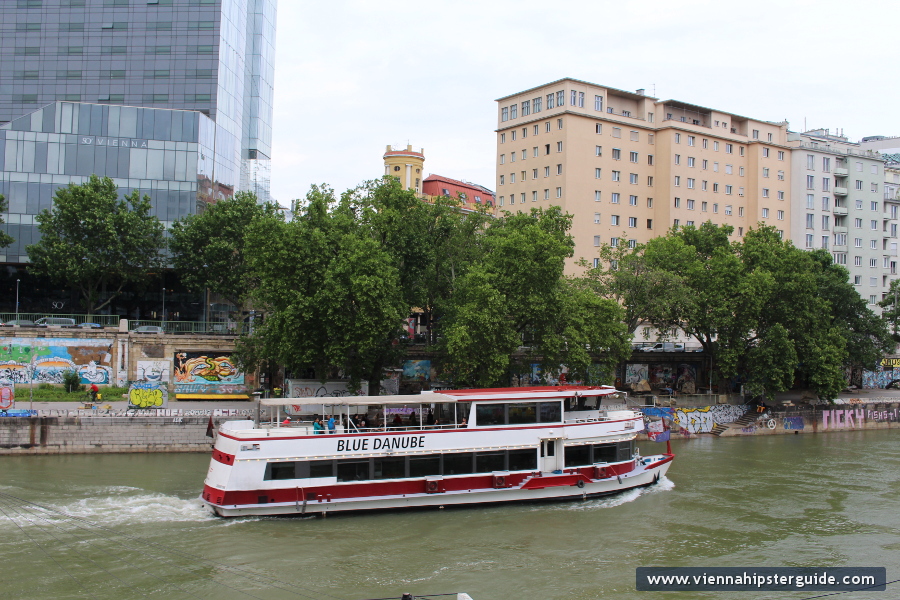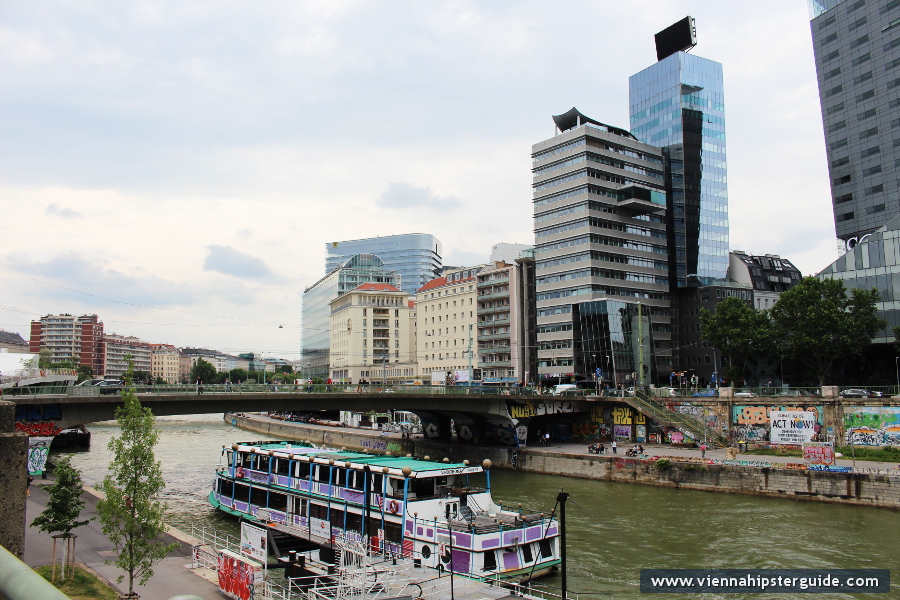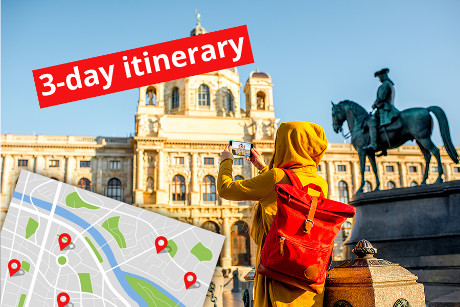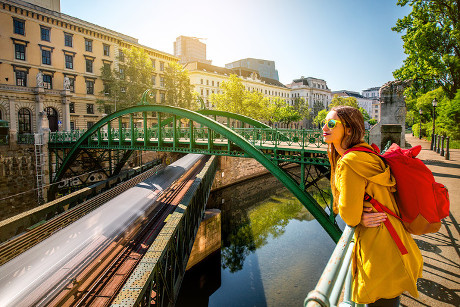Welcome to your travel guide and tourist information about short trips and city breaks in Vienna, Austria: www.viennahipsterguide.com
How to get to Vienna by plane, train, bus, ship and car?
Vienna, Austria’s elegant and historic capital, is a top European destination that’s accessible by a variety of transport modes, catering to all types of travelers. Whether you're arriving from across the globe or just a few hours away, there are convenient and scenic ways to reach this cultural gem. From international flights into the modern Vienna International Airport to picturesque river cruises along the Danube, the city welcomes visitors with open arms. This article explores the different ways to travel to Vienna—by plane, train, bus, car, or ship—helping you choose the best route for your journey.

Getting to Vienna in Different Ways
By plane
For passengers who come from a far distance, the quickest way to reach Vienna is by air. Vienna International
Airport (VIC) is situated at the outskirts of the city (in Schwechat) and is easy to reach through public transport from
and to Vienna. It is the largest and busiest airport in Austria, serving as
the primary hub for both international and domestic flights. Many major airlines, including Austrian Airlines, Lufthansa,
and low-cost carriers like Ryanair and EasyJet, offer regular flights to Vienna from cities around the world.
Check
out the airport's website for transfer options: https://www.viennaairport.com/en/passengers/arrival__parking
City Airport
Train timetable: https://www.cityairporttrain.com/en/home
To get to Vienna, Austria by plane, travelers can fly into Vienna International Airport (Flughafen Wien-Schwechat),
For budget-conscious travelers, booking flights in advance can help secure cheaper fares, and using comparison websites like Skyscanner or Google Flights can assist in finding the best deals. Additionally, flying during off-peak seasons or booking flights on weekdays can often lead to lower prices.
Getting from the airport to the city center: Once you arrive at the airport, you can take the City Airport Train (CAT), which takes about 16 minutes to reach the city center, or use the S7 suburban train, which is a more affordable option, though it takes a little longer. Taxis and airport shuttles are also available, though they tend to be more expensive.
By train
Traveling to Vienna, Austria by train is a convenient and scenic option, especially if you’re coming from neighboring countries like Germany, Hungary, or the Czech Republic. Vienna is well-connected to major cities across Europe through its central train station, Wien Hauptbahnhof (Vienna Main Station), which is the largest railway station in Austria. The station is situated just a few kilometers from the city center, making it easy to reach your destination by public transport, taxi, or on foot.
For travelers coming from neighboring countries, there are numerous high-speed international trains like the Railjet (operated by Austrian Federal Railways, ÖBB), EuroCity (EC), and NightJet trains, which offer comfortable and fast journeys to Vienna. Tickets can be purchased directly from the train stations or online via the ÖBB website or app, and booking in advance can often save money. Train routes from cities such as Munich, Budapest, and Prague typically take between 3 to 6 hours, while direct routes from Zurich can be as long as 8 hours, and routes from Bratislava can be as short as 1 to 2 hours.
For international travelers, it's important to check train schedules and seat reservations, especially during busy travel seasons. Many tourists also ask about the amenities available on trains, and most international services provide Wi-Fi, power outlets, and food carts for a more comfortable experience. If you’re planning to travel across Europe by train, the Eurail Pass is a popular option, offering flexible travel across multiple countries, including Austria. Once you arrive at Wien Hauptbahnhof, you can easily transfer to Vienna's efficient public transport system, including buses, trams, and the U-Bahn (subway).
ÖBB (Austrian Federal Railways) offers a lot of discounted tickets for particular routes throughout
Europe (look for Sparschiene) and convenient night time traveling through the ÖBB Nightjet lines.
Vienna has several modern railway stations, the busiest ones being the Main Railway Station (Hauptbahnhof) and
the Western Railway Station (Westbahnhof).
You can find information about timetables and tickets here: https://www.oebb.at/en/
By bus
Traveling to Vienna, Austria by bus is an affordable and convenient option for many travelers, especially those coming from nearby European cities. Vienna is well-connected to other major cities through international bus lines like FlixBus, Eurolines, and RegioJet, which offer regular services to the Austrian capital from destinations across Europe. Popular routes include services from cities such as Munich, Prague, Budapest, and even further destinations like Amsterdam and Zagreb. Buses generally offer a comfortable travel experience, with amenities like Wi-Fi, power outlets, and onboard refreshments, although the journey might take longer compared to trains or flights. For example, a bus ride from Munich to Vienna typically takes about 4 to 5 hours, while from Budapest, it can take around 3 to 4 hours. Tickets are often very budget-friendly, and booking in advance via bus company websites or apps can help secure the best prices.
In Vienna, most international buses arrive at the Vienna International Bus Terminal (VIB), which is located near the Wien Erdberg train station, about 5 kilometers southeast of the city center. From there, travelers can easily take a tram or subway to the city center. Alternatively, taxis or shuttle buses are also available. While traveling by bus can be slower than other modes of transport, it can be an ideal option for those on a budget or looking for a relaxed journey. Tourists often ask about comfort, and while buses are generally comfortable, it's a good idea to check the specific bus company's amenities before booking. Additionally, it’s important to be aware of the border crossing rules if you're traveling from outside the EU.
There are several bus line services in Austria that serve Vienna, including international bus companies.
- Postbus: https://www.postbus.at/en/
- Eurolines: https://www.eurolines.lt/en
- Flixbus: https://global.flixbus.com/
By car
Driving to Vienna, Austria by car offers flexibility and the opportunity to enjoy scenic routes through Central Europe. If you’re coming from nearby countries, Vienna is easily accessible via well-maintained highways. From Germany, the A1 motorway connects major cities like Munich to Vienna in about 4 to 5 hours, while from Hungary, the M1 highway takes around 3 to 4 hours. From the Czech Republic, it’s about a 4-hour drive via the D1 and A5 highways. Before embarking on your road trip, it’s important to know that vignettes (toll stickers) are required for driving on Austrian highways, which can be purchased at gas stations or online.
Once you arrive in Vienna, finding parking can be challenging, especially in the city center. Many tourists opt for Park & Ride facilities, where you can park your car at designated locations on the outskirts and easily take public transportation into the city. Alternatively, there are parking garages available, though they can be expensive. It’s also helpful to familiarize yourself with Vienna’s low-emission zones and street parking regulations, as fines for non-compliance can be high. If you're planning to visit multiple Austrian cities or neighboring countries, renting a car gives you the freedom to explore at your own pace while enjoying beautiful landscapes along the way.
ASFINAG Journey planner:
This is an online journey planner site: https://routenplaner.asfinag.at
ÖAMTC Verkehrsservice:
They offer information about traffic construction works and route changes for cars for the whole country issued by the Austrian Automobile Club (ÖAMTC).
Link: https://www.oeamtc.at/verkehrsservice/
Parking: check out parking zones when you stay in Vienna. You will most probably need to buy a parking ticket for parking in public.
Car rentals: the main car rental companies operate offices in Vienna, so you can pick a car and explore the city and the region at your own pace.
By boat / ship
The river Danube flows through Vienna and therefore offers a unique way of traveling to the Austrian capital. River cruise lines coming up and down the Danube from neighbouring countries stop by on the banks of the river in Vienna and it's a really pleasant experience
to explore this region by ship when the weather is mild.
Cruise boats: https://www.donaustationen.at/en/
Traveling to Vienna by river cruise is a relaxed way to reach the city and offers great opportunities to take stunning photos about your journey on the ship's deck. The Danube River, which flows through Vienna, is a popular route for river cruises, connecting the Austrian capital to several major European cities like Budapest, Bratislava, and Passau. Most river cruise lines, such as Viking River Cruises and Uniworld, offer itineraries along the Danube, providing a relaxing and picturesque journey through Central Europe. Cruises often feature luxurious amenities, fine dining, and guided shore excursions, making it an appealing option for tourists seeking a more leisurely travel experience.
Upon arriving in Vienna, cruise ships typically dock at the Vienna Cruise Port, located near the city center. This port is conveniently situated along the Danube River, making it easy for passengers to explore Vienna’s top attractions, such as the Schönbrunn Palace, St. Stephen's Cathedral, and the Hofburg Palace. Transportation options from the port to the city center include taxis, buses, or a short walk, depending on the docking location. It’s important to check your cruise itinerary for exact docking times and shore excursion options. For tourists planning a river cruise to Vienna, booking in advance is recommended, especially during peak travel seasons, to secure the best cabins and rates.


Enjoy your stay
No matter where your journey begins, reaching Vienna is an experience in itself—one that can be fast and efficient or leisurely and scenic. From air travel for quick access, trains and buses for regional connections, to cruises and road trips for relaxed exploration, each option offers unique advantages. With excellent infrastructure and transport services, the Austrian capital is well-prepared to welcome travelers from every corner of Europe and beyond. Planning your trip with the right mode of transportation ensures a smooth arrival and sets the tone for an unforgettable stay in Vienna.









